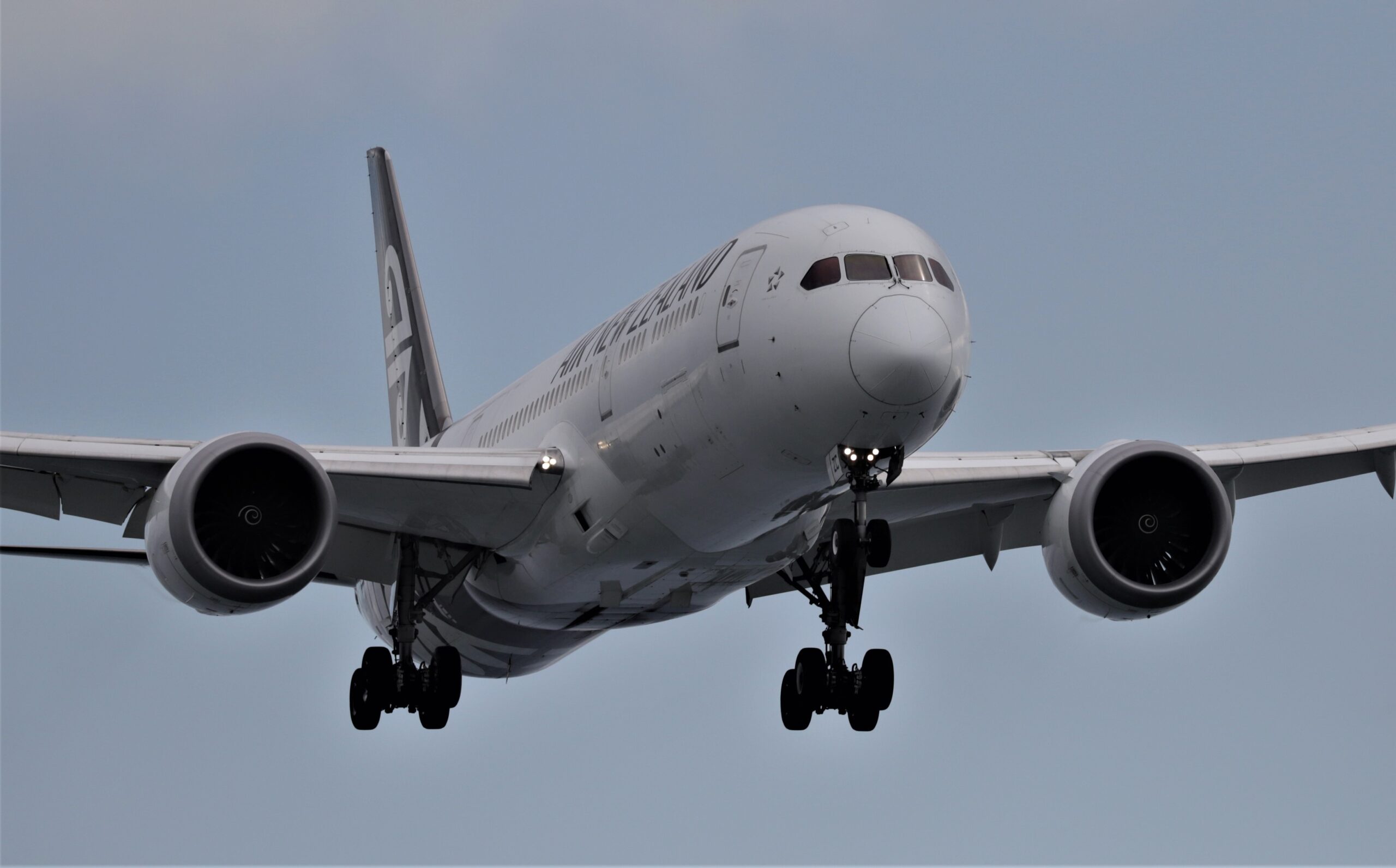Tyre issue forces Air NZ Cooks flight to divert
Thursday 22 February 2024 | Written by Al Williams | Published in Economy, National

An Air New Zealand plane pictured on approach to Rarotonga International Airport in 2023. Photo: Cameron Scott/22051151
A busy Air New Zealand service to the Cook Islands was forced to turn back for Auckland two hours into its journey.
The Dreamliner service NZ946, which had departed for Rarotonga Airport, reported the divert back to New Zealand on Wednesday morning around 11am (NZ).
After departing Auckland late around 9.40am, the plane made the divert when it was around two-thirds of the way through the 3000km trip.
Arrivals boards at Rarotonga Airport still showed the service as being “on time”.
TheNew Zealand Herald reportedthe diversion was not weather-related, and related to a matter separate from the delay on the tarmac while the flight was departing Auckland Airport.
A spokesperson for the airline said the redirect was due to a deflated tyre detected en route to Rarotonga.
Captain David Morgan, chief operational integrity and safety officer for the airline, said the flight “was redirected back to Auckland this afternoon due to low tyre pressure”.
This tyre change was to be conducted by Air New Zealand engineers who were waiting for the plane’s return to Auckland.
Air New Zealand hoped passengers and the aircraft would continue on to Rarotonga later in the afternoon, while it was later confirmed the flight arrived on Rarotonga about 9.30pm (CI), Tuesday.
“We apologise for the inconvenience and appreciate our customers’ patience,” said Captain Morgan.
The 25-minute delay before departure was to offload bags belonging to a passenger who failed to turn up for the flight.
On Wednesday, Morgan confirmed with Cook Islands News thatAir New Zealand flight 789 from Auckland to Rarotonga was redirected back to Auckland on Tuesday afternoon due to low tyre pressure.
“Our engineers changed the tyre once the aircraft returned to Auckland and all passengers then continued on to Rarotonga. We apologised for the inconvenience and appreciate our customers’ patience.”
What happens if your plane gets a flat tyre?
A Boeing 787 Dreamliner has eight tyres for service. While flights move very little on their tyres, there are key parts of their journey: takeoff and landing.
A single Michelin Air X tyre for a Boeing narrow-body plane can cost upwards of $7000 according to Airways magazine.
NZ946 landed safely back at Auckland International just after 2:30pm.
A spokesperson for Auckland Airport said that emergency services were not required.
Meanwhile, Air New Zealand announced 2024 interim financial results yesterday.
Key points
- Earnings before taxation of $185 million
- Passenger revenue of $3.1 billion driven by a significant ramp-up in capacity across the international network
- Airline is currently reviewing pricing and capacity to reflect ongoing inflation pressures
- Unimputed ordinary interim dividend of 2.0 cents per share declared
- Significant improvement in onboard experience, reliability and customer response times
Earnings before taxation for the 2024 financial year are now expected to be in the range of $200 million to $240 million, including $20 million of currently assumed additional Covid-related credit breakage
Air New Zealand announced earnings before taxation of $185 million for the first half of the 2024 financial year. Net profit after taxation was $129 million. This is an expected reduction on the comparable period last year when the airline recorded one of its highest-ever results following the rapid return of air travel as New Zealand’s borders reopened.
Based on the airline’s balance sheet strength and the result announced yesterday, Air New Zealand shareholders would receive an unimputed interim dividend of 2.0 cents per share. The dividend will be paid on 21 March, to shareholders on record as at 8 March. This equates to a payout ratio of 41 percent.
Passenger revenue of $3.1 billion was up 21 percent, driven by a significant ramp-up in capacity across the international network. Demand was stable in most markets, but signs of softness in domestic corporate and Government demand was experienced from September. Overall capacity was up 29 percent on the comparative six-month period. Operating costs, including fuel, increased 21 percent due to a substantial increase in long-haul flying this year.
Inflationary pressures also continue to be felt. Non-fuel operating costs have increased around 5 percent or $100 million due to price inflation, which is on top of an increase totalling 15 to 20 percent across the last four years. The cumulative effect of these increases is having a significant impact on the cost of providing air services, including on the domestic network, and the airline is currently reviewing fares and capacity to better reflect ongoing cost pressure.
Al Williams/NZ Herald/Air NZ




















































